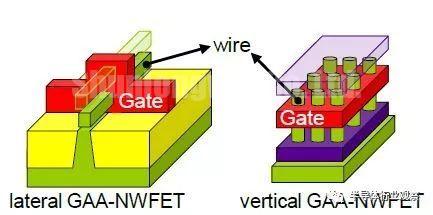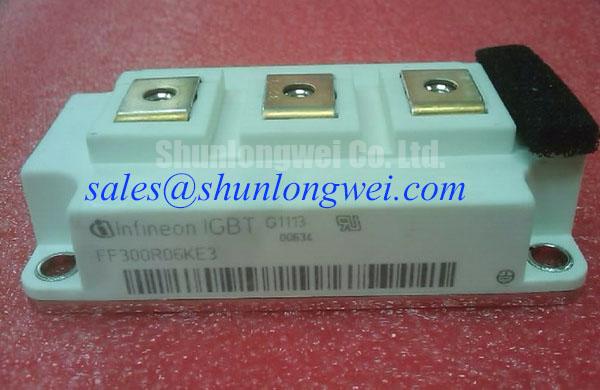 Transistor is a solid semiconductor device (including diodes, triodes, field effect transistors, thyristors, etc., sometimes referred to as bipolar devices), which has multiple functions such as detection, rectification, amplification, switching, voltage stabilization, signal modulation, etc. . As a variable current switch, the transistor can control the output current based on the input voltage. Unlike ordinary mechanical switches (such as Relay and switch), transistors use electrical signals to control their own opening and closing, so the switching speed can be very fast, and the switching speed in the laboratory can reach more than 100GHz.
Transistor is a solid semiconductor device (including diodes, triodes, field effect transistors, thyristors, etc., sometimes referred to as bipolar devices), which has multiple functions such as detection, rectification, amplification, switching, voltage stabilization, signal modulation, etc. . As a variable current switch, the transistor can control the output current based on the input voltage. Unlike ordinary mechanical switches (such as Relay and switch), transistors use electrical signals to control their own opening and closing, so the switching speed can be very fast, and the switching speed in the laboratory can reach more than 100GHz.
The main parameters of the transistor include current amplification factor, power dissipation, frequency characteristics, maximum collector current, maximum reverse voltage, reverse current and so on.
amplification factor

The DC current amplification factor is also called the static current amplification factor or the DC amplification factor. It refers to the ratio of the transistor collector current IC to the base current IB when the static signal is input, and it is generally expressed by hFE or β.
AC magnification
The AC amplification factor, that is, the AC current amplification factor and the dynamic current amplification factor, refers to the ratio of the change in the collector current of the transistor △IC to the change in the base current △IB in the AC state, generally expressed by hfe or β.
hFE or β are both different and closely related. The two parameter values are relatively close at low frequencies, and there are some differences at high frequencies.
Dissipated power
Dissipated power is also called the maximum allowable collector dissipation power PCM, which refers to the maximum collector dissipation power when the change in transistor parameters does not exceed the specified allowable value.
The power dissipation is closely related to the maximum allowable junction temperature of the transistor and the maximum collector current. When the transistor is in use, its actual power consumption is not allowed to exceed the PCM value, otherwise the transistor will be damaged due to overload.
Generally, transistors with PCM less than 1W dissipated power are called low-power transistors, transistors with PCM equal to or greater than 1W and less than 5W are called medium-power transistors, and transistors with PCM equal to or greater than 5W are called high-power transistors.
When the characteristic frequency fT "transistor's operating frequency exceeds the cut-off frequency fβ or fα, its current amplification factor β value will decrease as the frequency increases. The characteristic frequency refers to the operating frequency of the transistor when the β value drops to 1.
Generally, transistors with characteristic frequency fT less than or equal to 3MHZ are called low frequency tubes, transistors with fT greater than or equal to 30MHZ are called high frequency tubes, and transistors with fT greater than 3MHZ and less than 30MHZ are called intermediate frequency tubes.
Maximum frequency fM
The highest oscillation frequency refers to the frequency at which the power gain of the transistor drops to 1.
Generally, the highest oscillation frequency of a high-frequency transistor is lower than the common base cutoff frequency fα, and the characteristic frequency fT is higher than the common base cutoff frequency fα and lower than the common collector cutoff frequency fβ.
Maximum current
The maximum collector current (ICM) refers to the maximum current allowed by the collector of the transistor. When the collector current IC of the transistor exceeds ICM, the β value and other parameters of the transistor will obviously change, which will affect its normal operation and even be damaged.
Maximum reverse voltage
The maximum reverse voltage refers to the highest operating voltage allowed to be applied when the transistor is working. It includes collector-emitter reverse breakdown voltage, collector-base reverse breakdown voltage and emitter-base reverse breakdown voltage.
Collector-Collector reverse breakdown voltage
This voltage refers to the maximum allowable reverse voltage between the collector and the emitter of the transistor when the base of the transistor is open. It is generally represented by VCEO or BVCEO.
Base-base reverse breakdown voltage
This voltage refers to the maximum allowable reverse voltage between the collector and the base of the transistor when the emitter of the transistor is open. It is represented by VCBO or BVCBO.
Emitter-emitter reverse breakdown voltage
This voltage refers to the maximum allowable reverse voltage between the emitter and the base of the transistor when the collector of the transistor is open, and it is represented by VEBO or BVEBO.
Collector-base reverse current ICBO
ICBO is also called the collector junction reverse leakage current, which refers to the reverse current between the collector and the base when the emitter of the transistor is open. ICBO is more sensitive to temperature. The smaller the value, the better the temperature characteristics of the transistor.
Collector-emitter reverse breakdown current ICEO ICEO refers to the reverse leakage current between the collector and emitter of a transistor when the base of a transistor is open, also known as penetration current. The smaller the current value, the better the performance of the transistor.
 Transistor is a solid semiconductor device (including diodes, triodes, field effect transistors, thyristors, etc., sometimes referred to as bipolar devices), which has multiple functions such as detection, rectification, amplification, switching, voltage stabilization, signal modulation, etc. . As a variable current switch, the transistor can control the output current based on the input voltage. Unlike ordinary mechanical switches (such as Relay and switch), transistors use electrical signals to control their own opening and closing, so the switching speed can be very fast, and the switching speed in the laboratory can reach more than 100GHz.
Transistor is a solid semiconductor device (including diodes, triodes, field effect transistors, thyristors, etc., sometimes referred to as bipolar devices), which has multiple functions such as detection, rectification, amplification, switching, voltage stabilization, signal modulation, etc. . As a variable current switch, the transistor can control the output current based on the input voltage. Unlike ordinary mechanical switches (such as Relay and switch), transistors use electrical signals to control their own opening and closing, so the switching speed can be very fast, and the switching speed in the laboratory can reach more than 100GHz.
